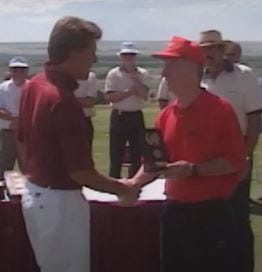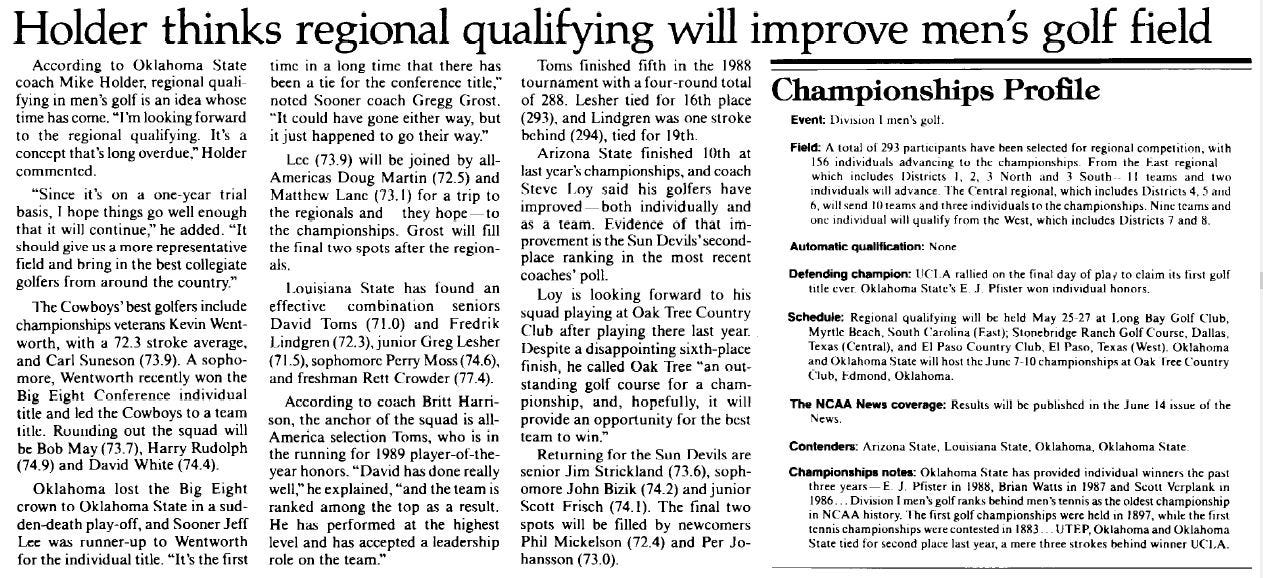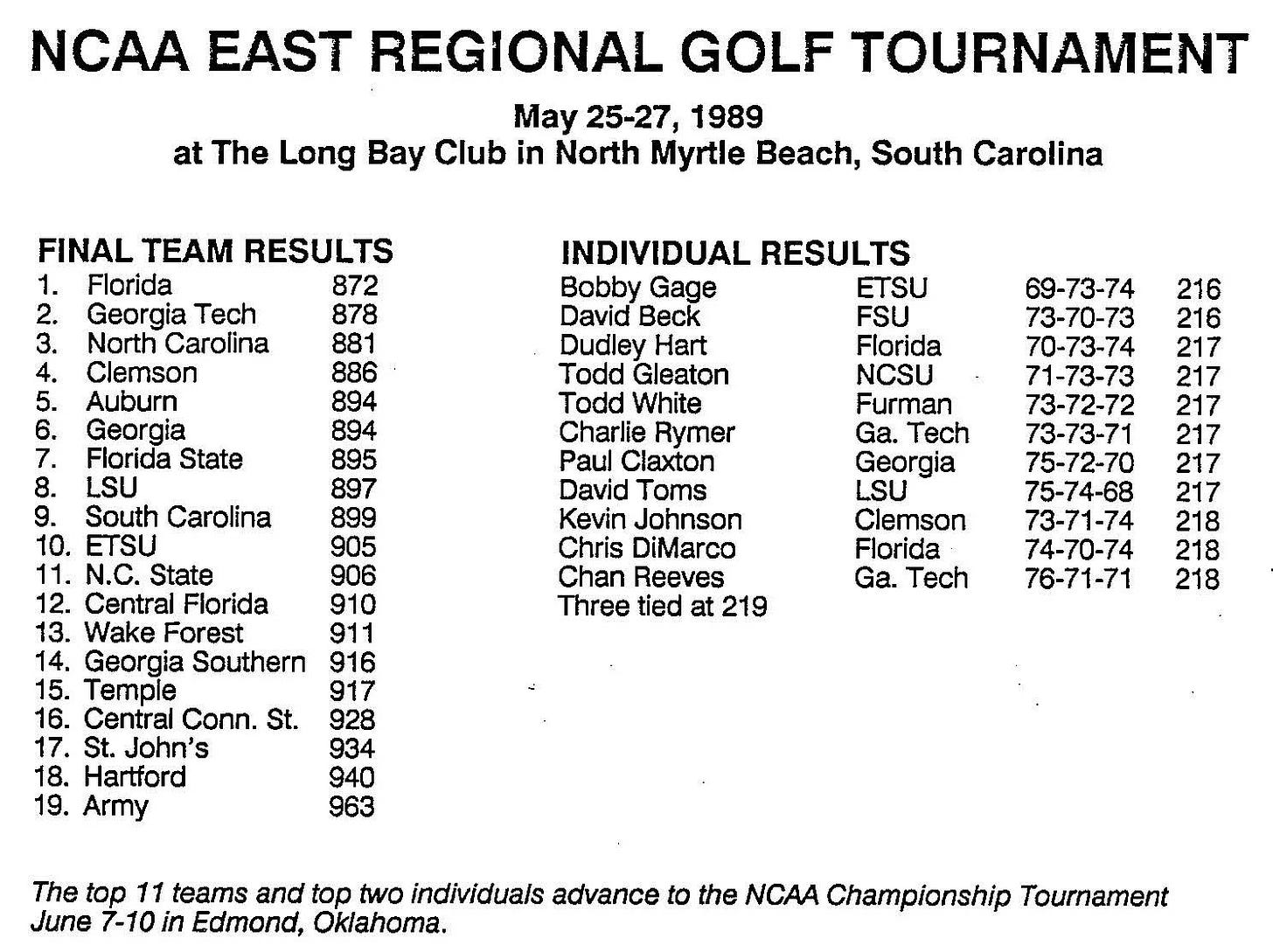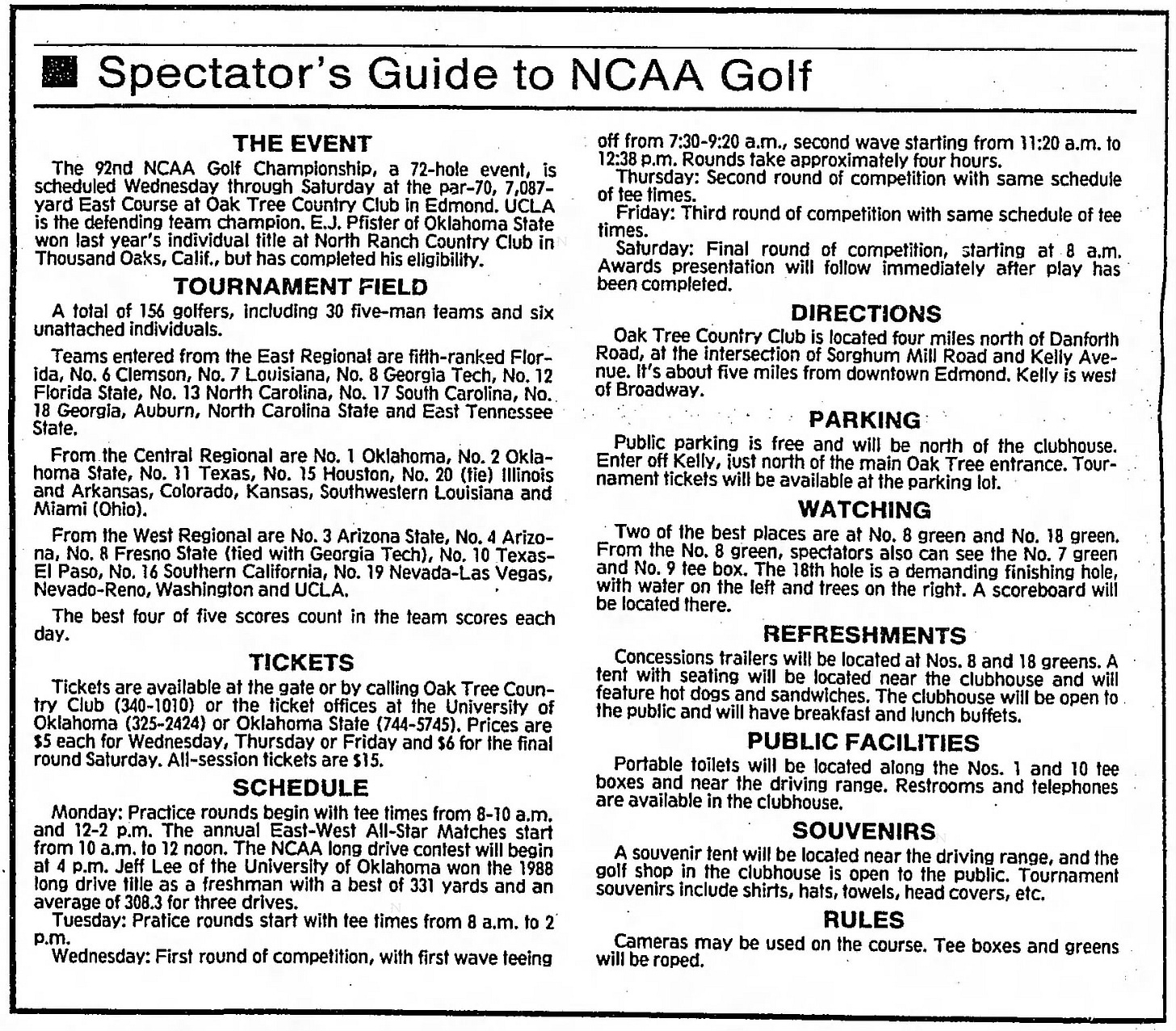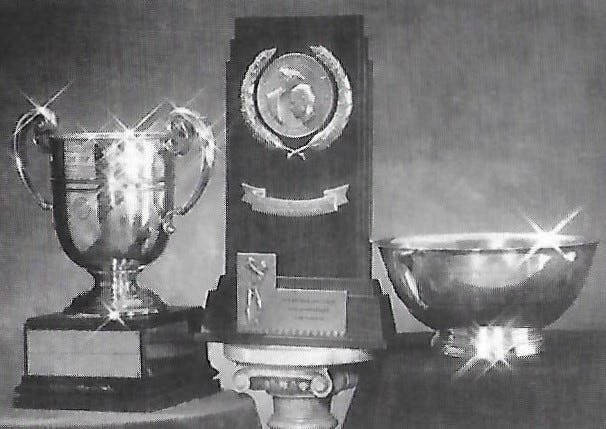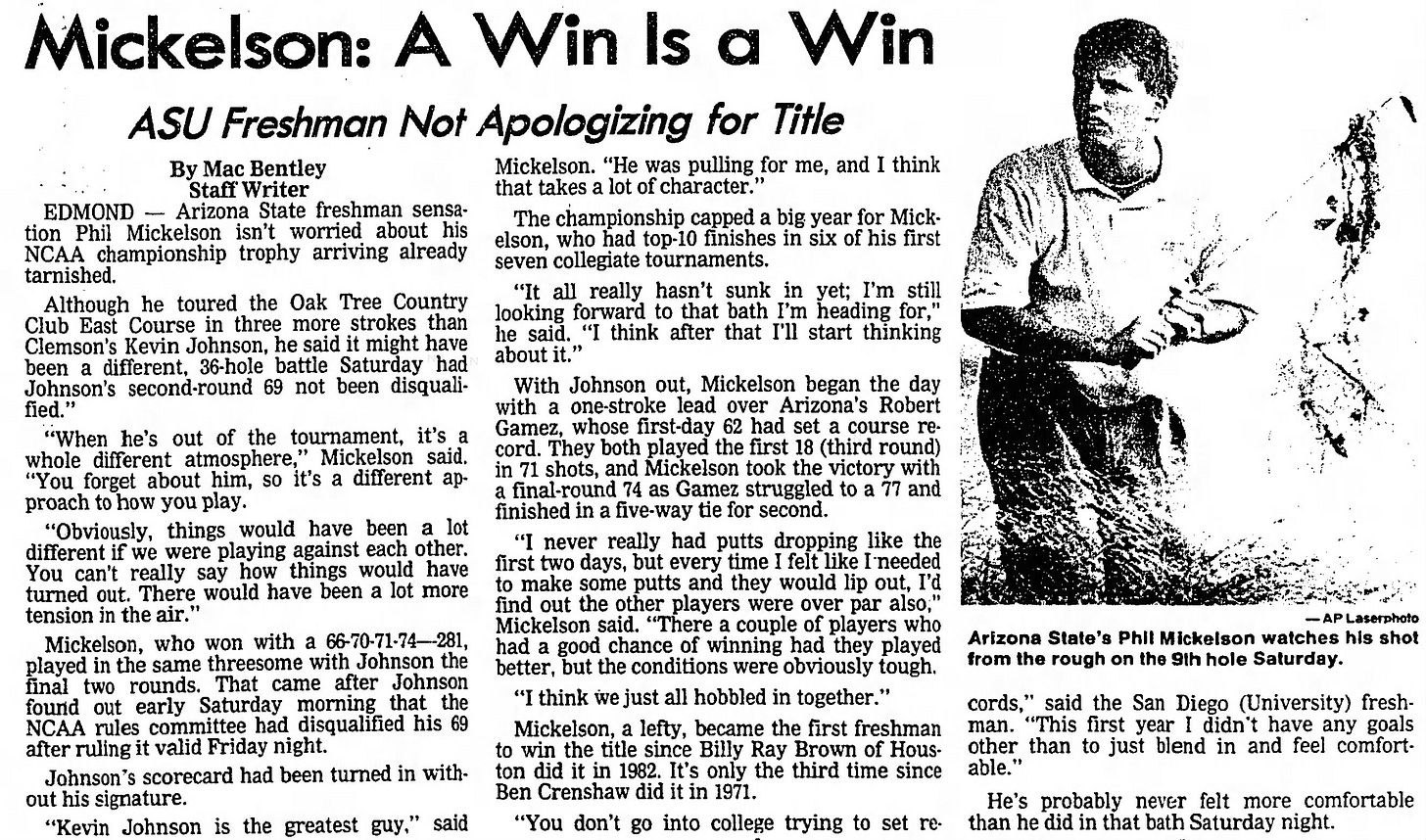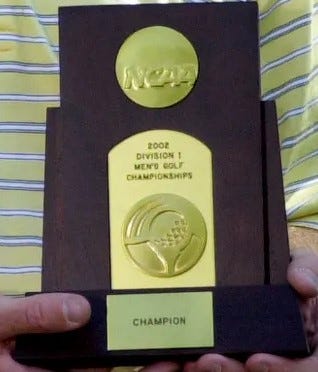This is part of a series on the Men’s Collegiate Championships
NCAA Championship Era: 1939-NOW
REGIONAL ROUND-UP
Back in 1939 following the first golf championship hosted by the NCAA, Stanford coach Eddie Twiggs commented that the 192-player field (a record at the time) was evidence that the tournament was on the brink of becoming unwieldy. Coach Twiggs suggested that perhaps some qualifying measure should be instituted, such as utilizing conference championship results to limit the national championship field. It took 25 years for the NCAA Golf Committee to formally introduce measures to limit the field (to around 225 players) by creating screening committees for each of the 8 NCAA districts which invited teams they believed to be the best in their area to the national championship. Some form of this selection committee continued for the next 22 years until the NCAA announced in 1987 that the 1989 championship would run a one-year trial using a “Regional” qualification format where districts were grouped to create 3 regional tournaments, awarding national championship berths to a specific number of top finishing teams - 9 in the West, 10 in the Central, and 11 in the East - as well as top 2 individuals not on those teams from each regional. Although many were skeptical of the change, others such as Oklahoma State coach Mike Holder were convinced this was the best move for college golf. Evidently the Holder group was right (or at least won out) as the Regional format was made permanent shortly after the 1989 championship.
WEST REGIONAL: El Paso CC
Most of the top teams in this regional made it safely through into the NCAA championship with the exception of San Jose State who finished 14 shots behind the defending NCAA champion UCLA who grabbed the final spot. Many of the top finishing players including Robert Gamez [Arizona], Jim Strickland [ASU], and Phil Mickelson [ASU] figured to be strong contenders at NCAAs.
CENTRAL REGIONAL: Stonebridge Ranch
This was easily the most interesting regional site this year, with drama at both the top and bottom of the leaderboard. Oklahoma and Oklahoma State tied for the top spot which, due to NCAA rules, they were unable to resolve. Just a little over a week prior the two teams had tied for the top spot in the Big Eight conference championship, but Oklahoma State came out on top following a sudden-death playoff. The cutline drama involved Tulsa, ranked in the top 20 teams in the country, losing in a 3-for-2 playoff for the remaining berths into the NCAA championship. Ohio State also failed to qualify.
EAST REGIONAL: The Long Bay Club
Another stunner result was Wake Forest, easily ranked in the top 10 (if not 5) teams in the country, not making it through regional qualifying. Another top 20 team not advancing was Georgia Southern.
Intercollegiate Championship #92: June 7-10, 1989
Host: Oak Tree Country Club (co-hosted by Oklahoma and Oklahoma State)
Format
Team and Individual stroke play
Day 1 = **rained out
Already saturated from 5+ inches of rain in the previous week, the course got another 2 inches overnight making it unplayable
More weather predicted for Sunday forced the schedule to condense
Day 2 = 18 holes
Day 3 = 18 holes
Originally no cut planned, but change due to weather
**Cut to top 17 teams
**Cut to individuals on teams which made the cut as well as the top 5 individuals not on those teams
Day 4 = 36 holes
NCAA rule prohibited playing before noon on Sunday (tomorrow) so decision to get in 36 holes Saturday (today) to finish tournament
If the rain had prevented all teams from finishing 72 holes then it would have been a 54 hole final
**72 holes determines Team and Individual championships
Results
Team Champ: Oklahoma (1 NCAA, 1 overall)
Coach Gregg Grost’s Oklahoma Sooners had been knocking on the door for a while. They had three starters returning from the previous year’s team which had finished T2 behind UCLA - along with UTEP and Oklahoma State - that were motivated by the knowledge that they had been only a few strokes away from earning the school’s first team title. Their hunger and drive which lead to five tournament wins in the 1988-89 season was kicked up another notch when in an 11 day span they tied with rival Oklahoma State for the Big Eight championship - lost in a playoff - as well as the first ever Central Regional (no playoff). With the sketchy weather delaying the first round by a day and threating again on the fifth, the schedule got squeezed which may have worked in the Sooner’s favor. Through two rounds they found themselves in great position, T2 with Arizona State only 5 shots back of Clemson. Through a crazy set of events we’ll touch on below, they started the 36-hole final day sharing the lead, ready to finish what they had started a year ago. Instead of faltering down the stretch, the Sooners posted the best scores for each the morning third round and afternoon fourth, running away with the title by a whopping 19 strokes over Texas. This dominant victory still stands as the record largest in the daily 5-count-4 era (1978-2008).
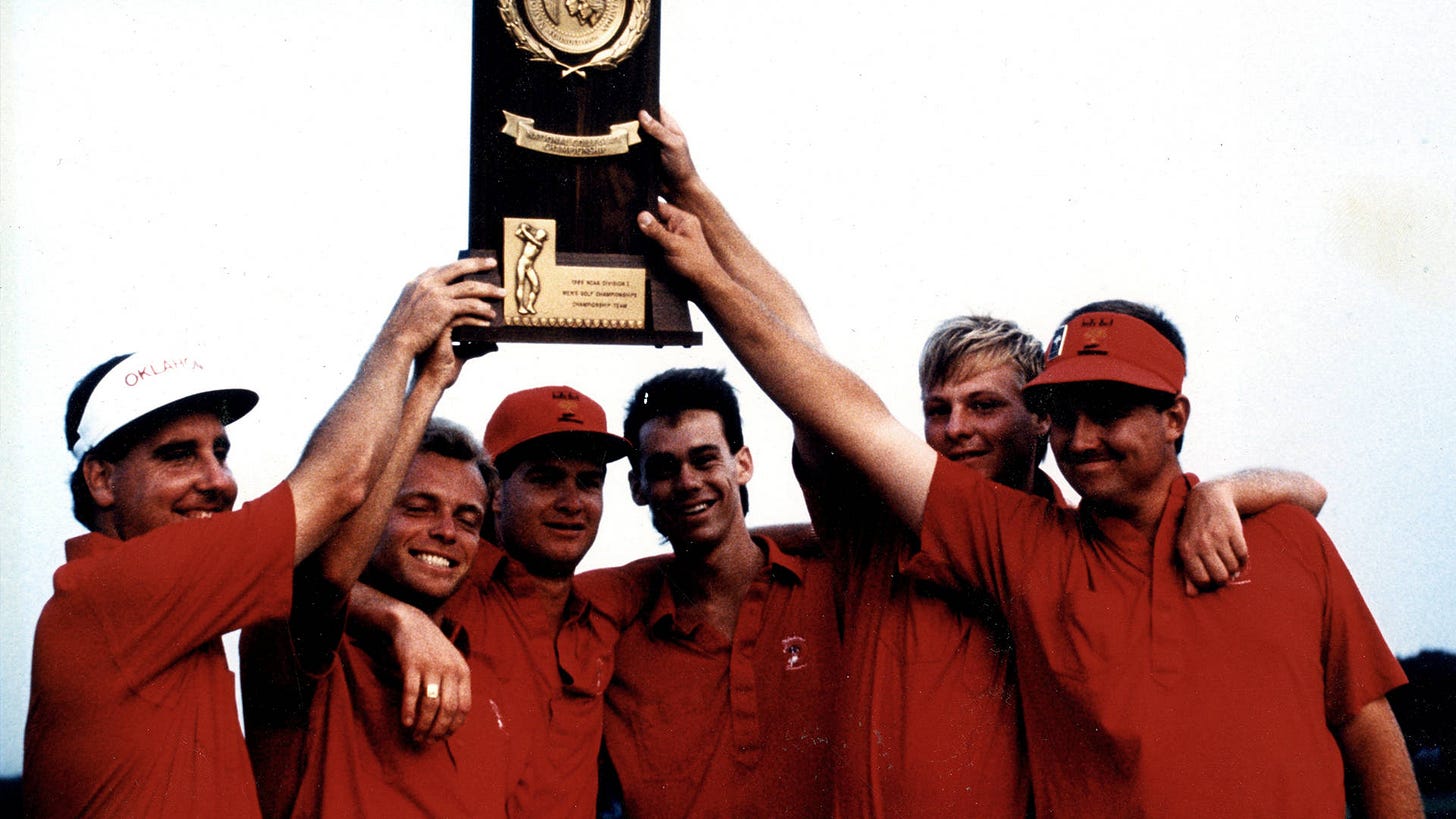
(via Oklahoma Athletics) EXTRA HOLES: The NCAA Team Trophy
The picture above shows the three types of trophies typically awarded throughout most of the 1960s-1980s: the Maxwell Cup held for a year by the winning team, the Chick Evans Bowl held for a year by the team of the winning individual, and the large NCAA championship “board”-style trophy that made the team’s permanent collection - not pictured is the smaller replica given to the individuals on the winning team as well as the slightly different variation that went to the individual winner. Sometime in the early 1960s (believed to be 1964), this team trophy was standardized across all of the NCAA-governed sports - replacing a myriad of other trophy types - and was usually awarded to the First, Second, and Third place finishing teams. Although the Maxwell Cup was phased out (believed to be 1988), the NCAA team trophies have continued to be awarded annually, changing styles in 2002 and finally 2008 to the design used today. It’s this trophy alone that you see teams holding in celebration photos taken since the early 1980s. Looking at the trophy cases for teams like Arizona State and Oklahoma State shows a wonderful array of the different NCAA trophy types awarded over the years.
Individual Medalist/Champ: Phil Mickelson [Arizona State]
When players finally got to tee up for the first round, not even Robert Gamez [Arizona] - the eventual Haskins and Nicklaus awards winner for the year - predicted getting off to such a hot start, setting a new NCAA championship low round record with an eye-popping 62. With his 8-under par round, Gamez broke the record of 63 set in 1984 by Jim Begwin [Oklahoma], but Begwin’s 9-under par round still stood as the lowest in relation to par. Following a round that low is tough, but his second round 75 was good enough to keep him in third at 137, one shot back of Phil Mickelson and two back of the leader Kevin Johnson [Clemson]. Well, at least that’s how things stood at the end of the day. By the next morning, Mickelson and Gamez found themselves one spot higher on the leaderboard after a crazy set of events. Accounts differ slightly on what happened, but the short version of Kevin Johnson’s ordeal is that after his round he failed to sign his scorecard before jetting off to the media area, a mistake which ultimately lead to his disqualification under the same rule that had affected a UNLV player the first round. The crazy part was that the NCAA committee had in the first hours originally ruled to NOT DQ Johnson on the info provided which suggested “extenuating circumstances”. By the morning, more info from other people involved was apparently convincing enough to reverse the ruling, leading to Johnson’s score being thrown out. Johnson, to his credit, bounced back to post very respectable scores of 70 and 73 in the final rounds played Saturday, leading Clemson to a 3rd place finish - would have been 2nd place if Johnson’s score had been counted in round 2. Who knows how things might have gone with the pressure of an individual and team title still firmly in Clemson’s grasp, but his closing 143 total was 2 shots better than Mickelson’s 145. The fact remains, however, that what-ifs (while fun) are ultimately a fruitless exercise given the fact that these scores were not shot in a vacuum. Mickelson battled the players left in the running, posting an afternoon 74 which was good enough to hold off a group of 6 other players tied for 2nd that included: Gamez, Oklahoma’s Doug Martin and Ricky Bell, Kevin Wentworth [Oklahoma State], Dave Stockton [USC], and Brian Nelson [Texas]. The Arizona State phenom officially put the larger golf world on notice, becoming the fourth freshman to win in the last 20 years when Ben Crenshaw [Texas] accomplished the feat in 1971 followed by Wake Forest’s Curtis Strange [1974] and Houston’s Billy Ray Brown [1982].
EXTRA HOLES: The NCAA Individual Trophy
As discussed in the team section, the NCAA had standardized the trophies given out to teams and the individuals playing for those teams for their permanent collection. Not pictured above was the permanent trophy given to the winning individual. The history of the various “trophies” awarded to the winner is a little complicated and something we’ll have to cover in detail later, but suffice to say that by the early 1950s the NCAA began awarding a small plaque which is seen in detail in the famous photo of Jack Nicklaus following his 1961 victory (below). This plaque/trophy would change styles over the years to match the changes made to the team trophy, and today is simply a miniature version of the same trophy with only the glass insert indicating it being for the individual winner versus the exact same trophy given to each member of the winning team. It’s just my opinion, but it would be really cool to bring back some uniqueness to this incredible accomplishment, especially considering the fact they no longer have a trophy like the Chick Evans Bowl where the winner’s name is literally engraved in history. It’s believed that the Bowl was phased out in 1988, meaning it’s missing the names of Phil Mickelson, Tiger Woods, and the 30 other champions since then. Hopefully this trophy as well as the Maxwell Cup will be found and we can all enjoy seeing that history again soon.
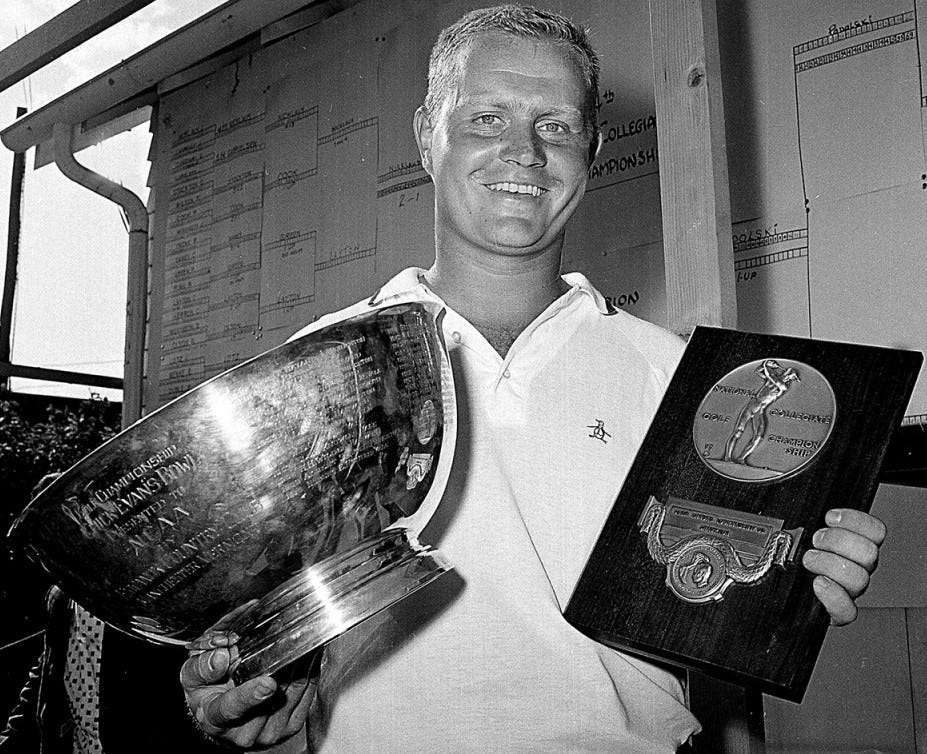
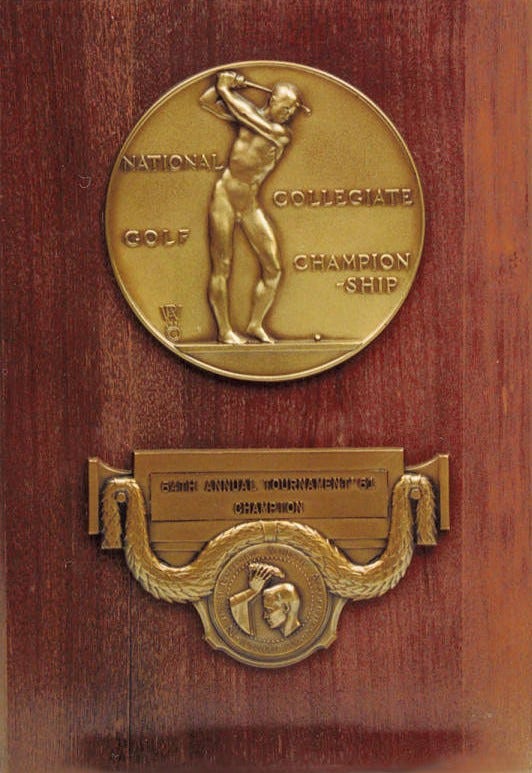
EXTRA HOLES: Phil Mickelson’s College Career
Following his 1989 individual championship, Phil Mickelson would go on to win the title two more times in his additional three years playing college golf, making him only the second (and last) man to claim the title three times. His repeated individual title in 1990 was made all the sweeter by the team victory that year, edging out Florida on their home turf. Later that year he would win the US Amateur, making him the first since Jack Nicklaus (1961) to win both the individual NCAA title and US Am in the same year, but doing one better over Nicklaus by getting the team victory.

The only year Mickelson didn’t win the individual title, 1991 at Pebble Beach, he finished T4, only 6 shots back of UNLV’s Warren Schutte who outplayed David Duval [Georgia Tech] down the stretch with a final round 67. Over the course of his incredible 4 year college career, Mickelson won 16 collegiate tournaments and even a PGA Tour event - 1991 Northern Telecom Open - the last amateur to accomplish the latter feat.
Starting in 1992, the Golf Coaches Association of America (GCAA) named an award after Mickelson, presented annually to to the Freshman of the Year at the DI, DII, and DIII level. Phil Mickelson will forever remain one of the top collegiate players of all time.

Thanks for reading!
Up Next:
In the next post we will cover a championship so good they wrote a book about it. It’s Tiger Tiger Woods, y’all!

